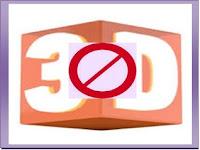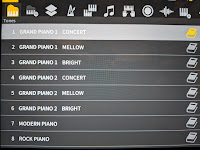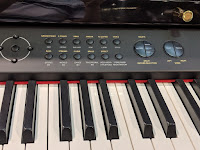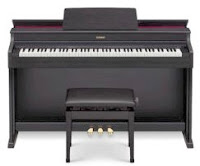UPDATED REVIEW
-Nov 1, 2023 – Artesia DP-150e – The Artesia digital pianos have been sold at Costco on-line for a long time. The current models include the vertical upright style DP-150e normally priced at $1199, the 32″ deep micro grand AG30 priced at $1699, and the 48″ deep (from the wall) mini grand AG50 priced normally at $2599 price plus tax. In this review we are focusing on the DP-150e upright style digital piano. The Artesia brand is built by a manufacturer in China as are other digital piano brands.
UPDATED REVIEW
-Nov 1, 2023 – Artesia DP-150e – The Artesia digital pianos have been sold at Costco on-line for a long time. The current models include the vertical upright style DP-150e normally priced at $1199, the 32″ deep micro grand AG30 priced at $1699, and the 48″ deep (from the wall) mini grand AG50 priced normally at $2599 price plus tax. In this review we are focusing on the DP-150e upright style digital piano. The Artesia brand is built by a manufacturer in China as are other digital piano brands.
The Artesia digital piano models have been out for a number of years and I have not been favorable to past Artesia digital pianos because in my opinion they did not play like real pianos at all.
You might ask why there is such a price difference between the Artesia DP150e in polished ebony finish and the more well known piano makers like Yamaha, Kawai, or Roland? In my opinion there is one main reason for that and it is because the top brands use more advanced piano key actions, piano sound engine technology, which will give you a much more realistic piano playing experience as compared to a real acoustic piano, and the triple pedal system which is noticeably more authentic on other brands.
Although there are many cool features on these models, there are also areas in which they are not realistic in terms of the piano playing experience in my opinion. So where do these pianos fall short in my opinion? Well it has to do with key action, key sensors under the keys which control the repetition and piano sound response, piano sound realism and response, and pedaling. One of the first things I noticed was, even though the weight of the piano keys was better than past Artesia key actions, the physical action movement was much too light as compared to real pianos or better digital pianos in my opinion. That does not mean it’s bad but it does mean that it really does not feel and play like a real piano.

Something I noticed about playing the keys was the dynamic volume and tonal response. What I mean by this is that is when the keys go up and down on a real acoustic piano the tonal dynamics (piano sound) are mellow when pressing the key down softly and slowly and the piano sound is supposed to brighten up when you play the keys harder and harder with a smooth transition as you increase key velocity.
for best response.
On the DP150e Artesia piano, the volume response and tonal control (expression) is noticeably uneven and jumpy to me going from one key (note) to the other. So while you are playing a song, there may be one key you are playing that has a much brighter piano sound and the next key over may have a more mellow sound…or you may hear one key/note be louder and the key next to it may be quieter using the same finger pressure. That is the experience I had when I played the piano. Depending on your piano playing and listening experience you may or may not hear these things.Also, when playing one key softer to harder, the dynamics also tend to be a bit jumpy without a smooth transition as I mentioned earlier. There are different user touch settings but that did not change the outcome of the overall sound dynamics for me. These kind of piano sound anomalies generally do not happen on acoustic pianos and some other digital pianos because the tone, volume, and overall dynamics (expression) flow evenly from one key to the next up & down or on the same key whether playing softly or harder. This kind of uneven tone/volume and lack of tonal “color” out of the key action definitely does not inspire me to want to play on these pianos very much. But in my opinion for beginners and non-players, it likely won’t matter and they should be fine for awhile.

With regard to the piano sound itself, it definitely sounds mostly digital or artificial to me and not organic or natural, especially if you know what a real acoustic piano sounds like or a better digital piano with a more realistic piano sound chip like you’ll find in many Yamaha, Casio, Korg pianos, but then again they are more money. This Artesia model does sound more realistic than previous models so that is good, but in real pianos there are natural, organic, resonation elements of the piano sound that a person can hear and that kind of thing gives a piano its character and personality with many expressive “colors” of music. The DP150e seems to have very little of that natural organic piano sound that I hear in acoustic pianos.
Sonically, for a lot of uninitiated people who don’t play piano, the Artesia piano sound is OK and in fact, you may like it and it is noticeably better than previous models of Artesia.
But to equate it with a real acoustic piano or a top name digital such as Kawai, Yamaha, Casio, Korg, or Roland, is not a fair comparison in my opinion. The DP150e is at a much lower price than the top name brands for similar looking product so you normally get what you pay for.It’s also good to know that many of these digital piano companies tend to exaggerate the reality of their pianos in their marketing and promotional materials so that you will buy it, and that is not unusual. Even though many brands have many features, in my opinion all those features should not be the primary reason to buy a digital piano. It should be about the piano playing experience and how real it is as compared to a real acoustic piano. I see it happen often, even from the top digital piano companies.
They all do that to some degree and in many cases will say that their piano will play and sound like a real piano, but I can certainly disagree with them about their statements once I have played their products. So don’t be sold on something just because the maker of the product says you should be, because they are all trying their best to get you to buy their product through their marketing and promotions. Whether it is Yamaha, Roland, Kawai, Casio, Korg, Suzuki, Williams, or whoever it is. they always say great stuff about their pianos because, after all, it is their piano, and their goal is to sell it.
As far as the pedaling goes, it is OK and just average, not great but acceptable. The pedals are full size and nice looking, but do make a knocking noise each time when the pedals come back up after pushing them down with your foot. That can be a somewhat annoying especially if you have played acoustic pianos or some better digital pianos with a quieter pedal movement. The pedals work appropriately and the sustain decay time is actually good when I was playing it so I do like that. However the piano sound when sustaining it with the damper pedal sounds artificial and does not have that organic, natural decay-sustain character to it.
This is due again to the fact that the piano sound elements of pedal and string resonance are not present in the piano sound engine so all that is heard is mainly a linear digital type of piano sound when being sustained. But for the average person who knows little about piano sound and what it is really supposed to be like, they may not notice this issue. But for me, it is not at all something that I would personally enjoy. But many of you out there are likely just at a beginner level of piano playing and perhaps you have not been playing real pianos for any length of time (or at all), so again, you may not notice the sound being as unnatural as it was for me when using the damper sustain pedal.
OK…on to the fun stuff, and this piano has plenty of it. These pianos have lots of instrument sounds, interactive accompaniment styles, along with a variety of rhythm patterns. Rock, Latin, jazz, waltz, march, country, and so on. Electric pianos, harpsichords, strings, bells, brass, woodwinds, horns, reeds, special effect sounds, etc with some that sound good and some not very good. Some of these overall features are useful and some not very useful, but that is to be expected, especially in these price ranges for an Artesia piano. However overall the functions are plentiful, useful, and fun to use
and I enjoyed them. There’s no doubt that many families will also enjoy many of these features which includes 136 instrument sounds, 99 accompaniment patterns and drum rhythms with variation, intro, and ending on each one along with being able to easily control tempo faster/slower, auto harmonize, and layer & split any two instrument sounds.
play the same notes at the same time with the lower part of the keyboard being electronically converted to the same octave piano sound as the upper portion of the keyboard. useful for 2 people playing the same notes in the same music at the same time. I must admit that does not happen too often but it is useful when needed. Many other digital pianos have these fun and educational features as well so Artesia is not the only one.
It is important to note that there are only 2 acoustic piano type sound selections on these pianos with only the first one called “grand piano” and sounding more like an acoustic piano, although to me not a grand piano sound as claimed, even though they may have sampled the sound from a grand. The 2nd piano sound selection called “bright piano” is, in my opinion, a poor sound sample which has some noticeable stretch tuning problems that causes the piano to sound like it is “out-of-tune” sometimes when using that piano sound and playing a variety of chords on the piano. The 1st piano sound sample does not have this issue but the 2nd one does.
Many other digital pianos in this price range (mostly vertical size pianos) have more variety of acoustic piano sound samples which are noticeably better and more authentic in my opinion. The piano sounds are the main reasons people buy pianos and everything else tends to be secondary. So when it comes to acoustic piano variety and quality using preset buttons or using the menu on these pianos, there are only two of them in these models’ and the 1st one is the only one worth playing in my opinion when it comes to a piano sound. But some of the other non piano instrument sounds are very nice and can be fun to play.
To access the many functions on these pianos there are direct access buttons on the control panel above the keyboard for the instrument sounds in groups and the instrument sounds in groups, as well as a small but useful LCD display screen to see what you’re doing, which I like. There is also a small knob called a “data wheel” on the right side of the display screen, which you can turn to move through the selections at a quicker rate or you can move through them with +/- buttons one at a time, so when it comes to controlling the features such as accompaniment or keyboard
volumes, etc, overall I do like what these pianos have to offer. There is also 3 large knobs on the left side of the control panel which give you instant access to the master volume of the piano including bass and treble control of the sound.
With regard to the digital features there are also other ones including adjustable digital metronome, 16 track recording & playback, transpose, octave shift, tuning, 36 registration memories to store your own favorite settings that you created, and many more. One of my favorite things to do on a digital piano is to be able to play General MIDI song files on the piano through a USB flash drive and play or sing along with them. These Artesia pianos can do that and some of the song data (title, etc) is taken from the USB flash drive and displayed in the blue LCD piano
display screen. So when it comes to playing along with and listening to favorite songs, this piano can do that very well assuming you have the necessary MIDI song files that you like It is also useful for learning new songs because you can adjust tempo
with the tempo control on the piano along with muting out different tracks.
Underneath the left side of the Artesia piano is a connector box which includes two 1/4″ headphone jacks, a MIDI output, USB output to external device, stereo audio in and out RCA jacks, a volume knob to control line level volume, and a Bluetooth connector for a Bluetooth adapter provided with these pianos. Basically the connector box has everything you would need to connect just about anything you want including being able to stream audio files from your external Bluetooth device (phone, iPad, etc) through the piano speaker system. Most pianos in this price range do not have all those connectors so the Artesia pianos do a very good job in this area and I wish more companies would have this kind of connector variety.
The internal speaker system of these pianos are more than adequate with the vertical style DP150e having four speakers (2 larger/2 small) going through 80 watts of power (although each of the 2 larger speakers is only rated at 20 watts/ 6 ohms. So when it comes to volume, there is plenty of that, however volume does not necessarily equate to quality tone. The sound on the DP150e is a bit muddy (dark) and muffled to me and makes the piano sound have a much more digital (artificial) tone and not near as good as listening to it through a good set of stereo headphones. The sound output and clarity on the mini grands was much better
The best things about this piano in my opinion is the way they look and the “bells & whistles” that they have on them. There is no question that it is attractive in its polished ebony cabinet with sliding key cover and matching bench, and that’s something many people like to have. Speaking of the benches, although they are nice looking and comfortable, they definitely are not wide enough to be considered real “duet” size benches. Duet size benches are typically about 30″ wide and the Artesia bench is 24″ wide…definitely not enough room for 2 average size people or one adult and one child to sit on comfortably together so they are really less than duet size benches. The factory warranty on this Artesia piano is only one year whereas other digital piano brands in these price ranges are anywhere from 3 years to 5 years in length. So if you are wanting a good, long warranty, Artesia pianos don’t have them like other brands do and that is definitely a disappointment to me. These days a 1 year warranty is just not very much as compared to the “competition,” especially if a repair should be needed in year 2, 3, etc.
In the final analysis, the DP150e is fun to play, looks good, and has fun features built in. But as pianos go when it comes to a real piano playing experience, in our opinion they are below average as far as piano playing authenticity goes compared to any of the more well known piano brands. You definitely do get what you pay for and that’s a big reason why this digital piano is a lower price…they are far below the piano playing realism that many of the well known top name digital pianos offer in our opinion. But again, they are twice the cost for similar looking cabinets With that in mind, I suggest you do your homework and read the reviews on the Costco website about this piano and you will see some interesting comments by Artesia owners.
That is really the issue…what is most important to you and how much money are you willing to invest to get it? If you want a beautiful cabinet then any of the Artesia models will not disappoint you and they all come with a very nice bench. Same thing with the “bells & whistles,” the Artesia pianos definitely have an abundance of those features. But once you make a purchase you will probably be keeping it for a very long time so be sure you make the right decision because once the fun of the drums, automatic chords, recording, and “song play” start wearing off and getting a bit old (and it can do that after awhile), what you will have remaining is the piano and the way it acts and behaves as a piano.
*** SPECIAL OFFER! Thinking about purchasing the Artesia DP150e? We can show you how to purchase a much newer model digital piano with a more authentic piano playing experience for less money than its normal Amazon/internet price. It’s called the Casio AP-470 which has an Amazon and internet discount price on-line of $1699. However, for a limited time until supplies run out, you can purchase the Casio AP-470 with an INSTANT REBATE which makes the price

just $1575*. This special price would include free shipping and no tax along with a 5-year factory warranty for parts & labor with in-home service.
If you want more info on new digital pianos and LOWER PRICES than internet discounts, please email me at tim@azpianowholesale.com or call direct at 602-571-1864.



















Does the AG-30 play by itself with moving keys?
What is your opinion when comparing the Yamaha 125 keyboard and the artesia dp e150